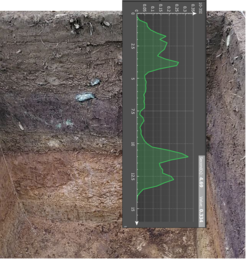Developing and Testing New Field Methods for Rapidly Dating Ancient Urban Trajectories

Understanding the timing and pace of ancient urbanization is critical for studying human settlement systems, but traditional archaeological dating methods are slow, invasive, and often impractical at large-scale sites. This project aims to develop and validate low-impact, rapid techniques for dating ancient urban trajectories using sediment coring and proxy-based analysis.
Our pilot project at Koh Ker, an ancient Angkorian capital, demonstrated that changes in magnetic susceptibility (MagSus) along trench walls coincide with the transition from earliest cultural layers to culturally sterile (natural) layers in excavated trenches, offering a promising method for detecting past human activity in smaller, less-invasive contexts like small diameter sediment cores. Building on this proof of concept, the next phase of our research involves shifting from traditional excavation-based validation to a large-scale terrestrial coring strategy. Using direct-push coring technology, we will systematically extract sediment cores across Koh Ker’s settlement area, applying MagSus as a rapid field screening tool to identify occupation layers. These cores will be further analyzed for radiocarbon dating, isotopes, biomarkers, pollen, phytoliths, and microcharcoal to reconstruct long-term urban and environmental dynamics.
To assess the scalability and cross-regional applicability of this approach, we will also conduct a parallel study at Polonnaruwa, Sri Lanka, testing coring methods in a distinct tropical urban environment. By refining coring as a minimally invasive tool for reconstructing urbanization timelines, this research provides a methodological breakthrough for archaeology, particularly in heritage-sensitive or environmentally challenging sites where traditional excavation is impractical.










